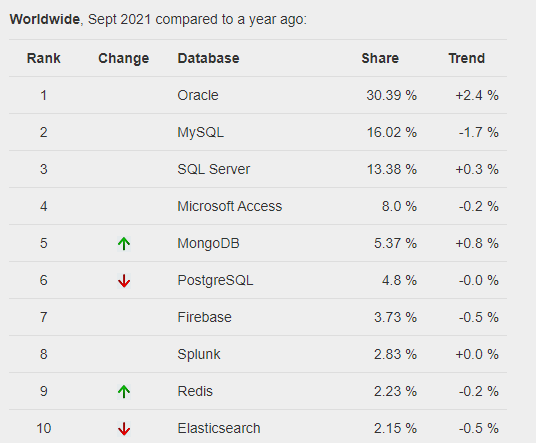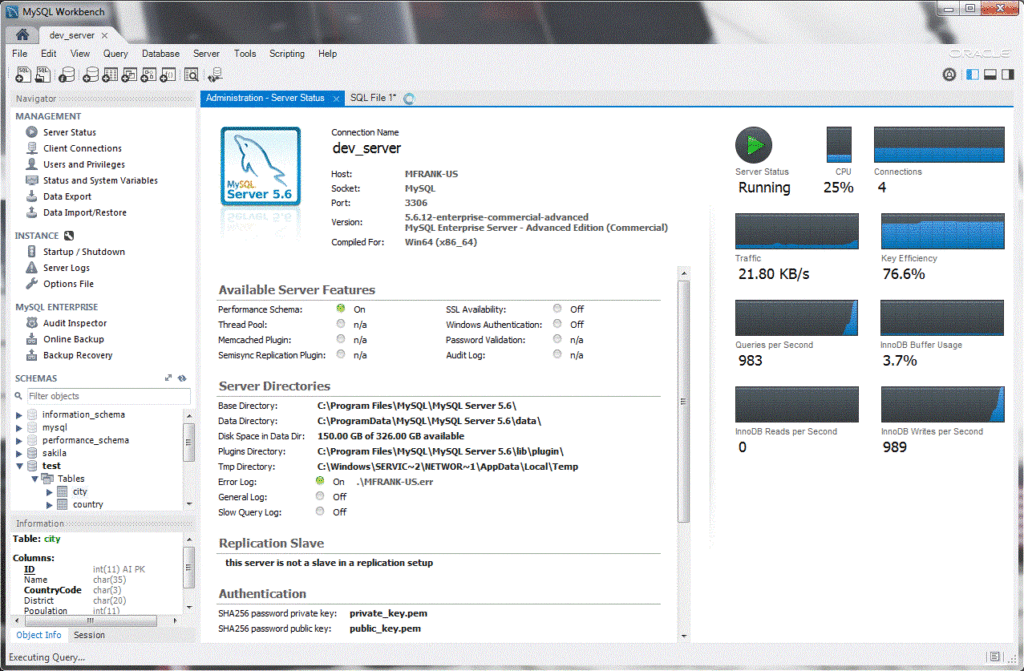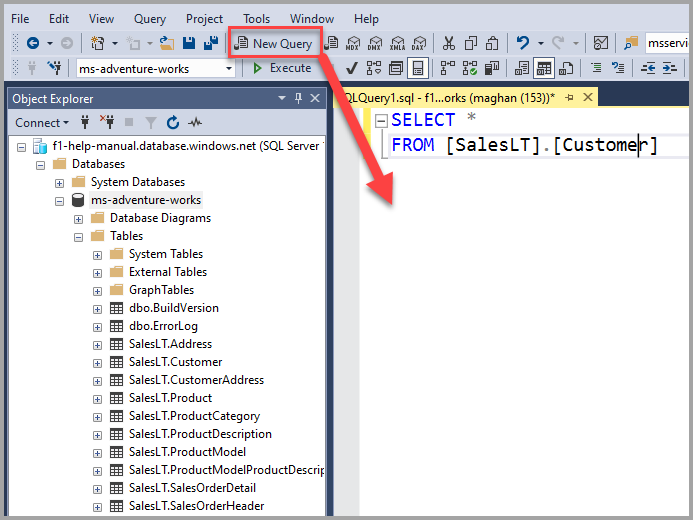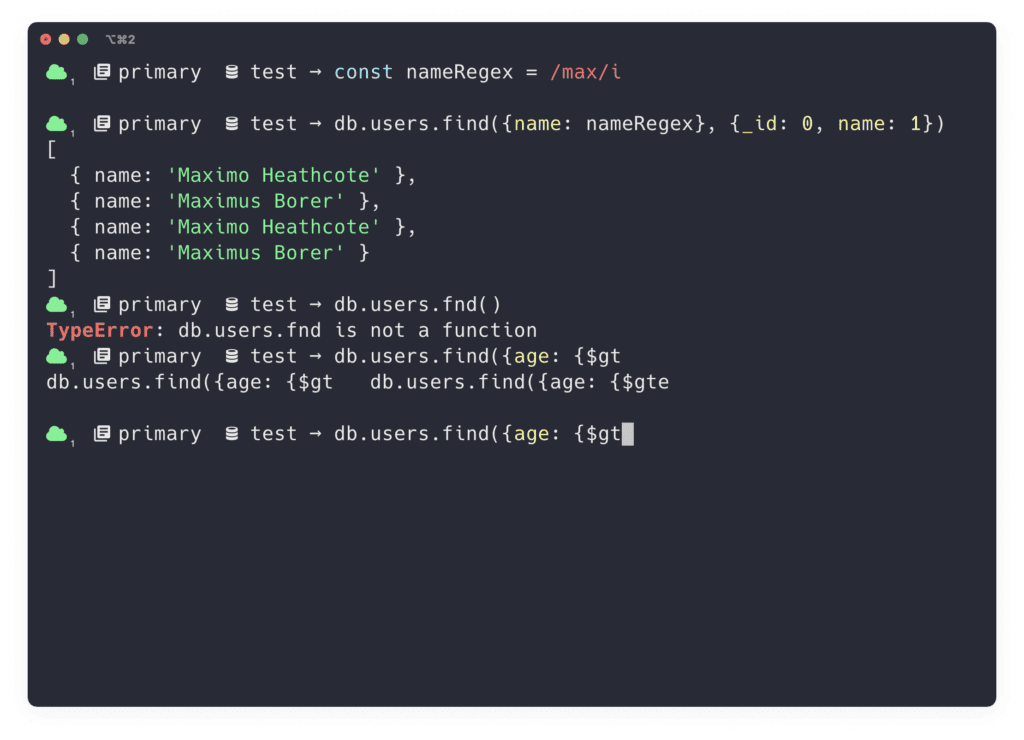Data and information are a pivotal part of any application, no matter who the audience is or what the purpose of that app may be. For example, a database is just as important for a financial program as it is for a video game, even though they store different information. Choosing the right database software is often thought of as a concern for a database administrator or DBA, but it can be equally important of a decision for developers, whose programs will be interacting with the database software.
Security and privacy are crucial elements in a database and, as such, choosing a database that is well-known, has community support, and is trusted by a large userbase is important. In this article, we will look at some of the best database software for developers and discuss the benefits of each database for programmers.
How to Choose the Right Database for Software Development
Choosing the right database is never a cookie-cutter answer. A lot of developers tend to stick with the same database they have used time and time again, and, while there is some comfort to that, in truth, it may not always be the best decision. While a programmer might know the ends and outs of a given piece of database software, the truth is that each development project has its own needs and requirements that not every database is suitable for.
For that reason, answering the question “how to choose the right database” is not as cut and dry as you might think. While the database requirements will change from software development project to project, there are some common features every programmer should look at when choosing the right database software. When making a database choice, ask yourself – or your development team – the following questions:
- What are the data requirements for the software you are developing?
- How much space does your program require?
- What is the maximum number of users that will be able to use your application at the same time?
- How frequently will your database schema change?
- How important is availability to your application? How much availability does your app need?
- What will be the scalability needs of the software you create?
- Is your userbase local or globally distributed?
- What current – and future – programming languages will you be developing your software in?
- Will your software require online transaction processing (OLTP) or analytic queries (OLAP)?
- What read/write ratio do you anticipate your software will have?
- What security feature do you anticipate your application will require? What are the security features of the database software you are considering?
- What third-party vendor integration do you want or need for your application? Does the database support third-party integration?
- Does the database have add-ons, plugins, or libraries that extend its functionality?
- What is your budget for database software, licenses, and support?
Database Software Features To Look For
Other than the common features to look for in database software listed above, there are a few other DB features to look for if you are a software developer. One of the most important database features is vendor support. The level and degree of support your database application or server needs will vary from project to project. It will also depend upon the members of the development team, the level of experience in-house, and whether or not you have a dedicated database admin or DBA. In some situations, your development team may only require the base basics of support. In other situations, you may need help setting up, configuring, deploying, and maintaining the database during production and after launch.
Security is a huge necessity for any database and so it should be a top priority when not only scouting a new database platform but also when plotting out your software project in general. Configuring your database with the right security features is pivotal, so if you do not have a database administrator on staff, consider outsourcing the role.
The Data Model – or database schema – is something else you will need to determine before your begin developing your software. What tables and columns will your database need? What relationships will your data need if you are going to be implementing a relational database or RDBMS?
Top Database Software
Below we will look at some of the top database software for developers in 2021. If you have done any research on databases, then most of these names will not come as a surprise to you – and that is a good thing. As stated earlier, you want a database that is well-known amongst the developer community.
A side note – while not a direct influence on the databases listed in this article, it is interesting to note the ranking of the top databases according to the PYPL Index, which looks at Google Trends data to see what the most search database names are in an effort to gain insight into the most used database software.
One final note: the database suggestions in this article are not listed in any particular order or implied ranking.
MySQL
MySQL is one of the most popular relational database systems (RDBMS) on the market. Originally part of Sun Microsystems, it is now helmed by Oracle. The database was written using the C and C++ programming languages and uses a structured query language (SQL) for its queries. It is in its eighth iteration, known as MySQL 8.0.
Below are some of the benefits of MySQL for developers:
- MySQL is platform-independent, meaning it can run on all of the popular Operating Systems (OS), including Windows, OSX, Linux, Solaris, and FreeBSD.
- Features support for some of the major programming languages, including C, C++, Java, Perl, PHP, Python, and Tcl.
- Robust table size – up to 50 million rows per table.
MySQL is used by some pretty large corporations, including heavyweights like FaceBook, Twitter, Verizon, and Booking.com.
PostgreSQL
Another popular database choice for programmers is PostgreSQL. It is an open-source database that falls into the category of Object-Relational DBMS. Like Oracle’s MySQL, PostgreSQL was written in C. It is a popular choice in the game development community, partially thanks to its high scalability and support for building fault-tolerant environments. It is used by a number of industry leaders, including Apple, Skype, IMDB, and Cisco.
Below are some of the benefits of PostgreSQL for Developers:
- Allows developers to create either Object-Relational DBMS or NoSQL databases.
- Highly scalable.
- Supports JSON and many popular programming languages.
- Built-in security features, including disaster recovery for enhanced data integrity.
- Highly extensible, thanks to programming language support, foreign data wrappers, and stored functions.
- Lets developers create custom data types, query methods, stored procedures, joins, triggers, views, and tablespaces.
- Supports major Operating systems, including Windows, macOS, Linux, FreeBSD, and OpenBSD
Oracle RDBMS
Also from Oracle, is Oracle Database. It is currently in version 19c. Despite this, a lot of companies rely on older, legacy versions, so always be certain to check that the version you choose is still patched and supported if you go with an earlier option. The database is a relational database that was written using the C-family of programming languages – namely, C, C++, and Java. It runs on 20 networking protocols and over 100 hardware platforms, making it incredibly portable.
Below are some of the benefits of Oracle RDBMS for developers:
- Support for managing multiple databases on a single server via Instance Caging, which basically lets you allocate CPU resources for different database instances within a server.
- Updateable Editions, meaning you can start off with a free version and ramp-up to a premium version after setup and learning the ropes.
- High data availability thanks to Real Application Clusters (RAC).
- Support for PL/SQL for procedural programming.
- RMAN failure recovery with continuous archiving.
MS SQL Server or Microsoft SQL Server
For .Net and Microsoft-related developers (and even non-MSFT developers), Microsoft SQL Server is a highly popular database software choice. It is arguably the most popular relational database management system in the world. Like others on this list, it was written using the C and C++ programming language. It offers support for structure query language (SQL) as you might expect. Though it is made by Microsoft, it does support Linux as well as Windows.
Some of the benefits of MS SQL Server for developers include:
- Integrates with non-relational solutions, including Hadoop.
- Integrates perfectly with Microsoft products and tools.
- Simple installation and configuration through a setup wizard.
- Encryption and data security do not need to be handled on the program or coding side; permission management tools within MS SQL Server handle encryption for developers.
- Low cost of ownership versus other database options, thanks to data mining and data management tools that are built into the software.
- Code-free designing, table creation, and views.
MongoDB
MongoDB is a NoSQL database solution for developers. It was developed using C, C++, and JavaScript. It is a popular option for mobile app developers and embedded programmers that are interested in the Internet of Things (IoT) or smart devices and appliances. It is known for its high speed and performance, thanks largely to the way that it stores data: in JSON-type documents. It also relies on internal memory for data storage, which adds to its performance abilities.
MongoDB has the following benefits for developers:
- JSON support.
- Schema can be written without the need for any downtime.
- Support for any kind of data modeling and data structure in the BSON data format.
- Native code data access is supported in MongoDB. This means you can use data structures native to any programming language (think dictionaries and lists in Python or arrays and Maps in Java) to access data Objects.
- Built-in, custom query language in the form of the MongoDB Query Language (MQL) for queries and analytics.
Types of Databases
There are many types of database software available for developers to use when creating their applications. Knowing what each type is can help you choose the right option for your next project. Below is a brief description of the main four types of database programs.
Hierarchical Database Software
Hierarchical database management systems are named because of the way they organize information. This type of database software organizes data in a tree-type structure, using top-down or bottom-up hierarchy. This hierarchy works off of parent-child relationships. In these relationships, children may only have one parent, while parents can have multiple children. For instance, you may have a one-to-one relationship, with a parent having a single child. You can also have a one-to-many relationship, where one parent has several children.
Another way to think of this structure is by imagining a family tree. Examples of Hierarchical databases include the IBM Information Management System (IMS), RDM Mobile, and Windows Registry.
Object-Relational Database Software
Object-oriented databases work well with object-oriented programming (OOP) languages and follow the concept of objects and classes. This makes Object-relational databases a solid choice if you are programming in languages like JavaScript, Python, Java (even though it is not truly an OOP language), C++, and VB.Net – to name but a few. In this database model, values and operations are stored in objects, which, in turn, make up the database. These objects are grouped together as classes (so long as they have like values and like operations).
Examples of Object-relational databases include ObjectDatabase++, ObjectStore, GemStone/S, Wakanda, Versant, and Perst.
Network Database Software
Network databases are based on a network data model and are similar to hierarchical DBMS in that a parent-child system exists. Unlike Hierarchical databases, however, network database relationships feature multiple parents and multiple children. Examples of Network database software include Integrated Data Store (IDS), Integrated Database Management System (IDMS), and Raima Database Manager.
Relational Database Software and RDBMS
Probably the most well-known and widely-used database system is the Relational database model. This type of database organizes data by independent tables, which you can query and perform operations on, including Select, Join, and Append. This is achieved using structured query language or SQL. Examples of relational database software include many on this list, such as MySQL, Oracle Database, MS SQL, and IBM DB2.






